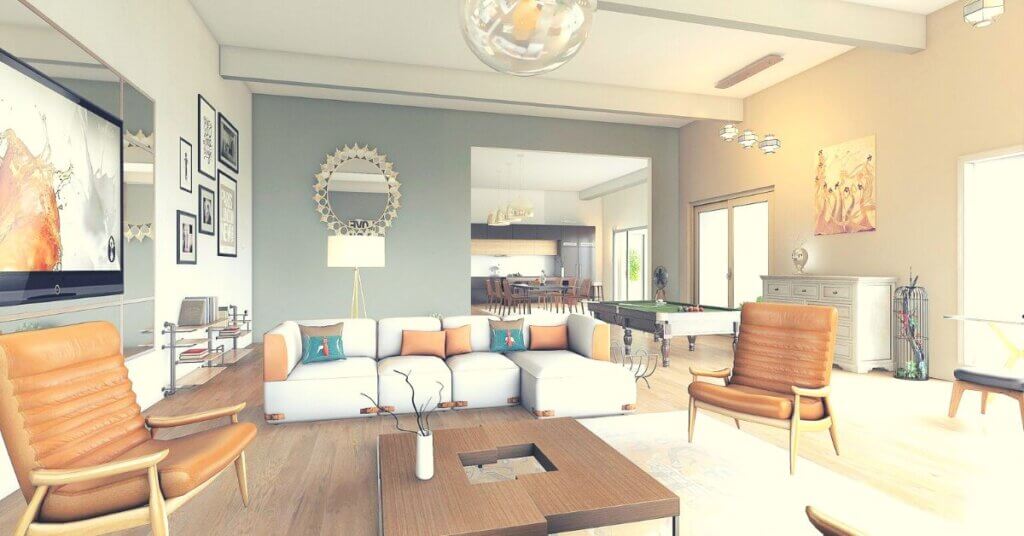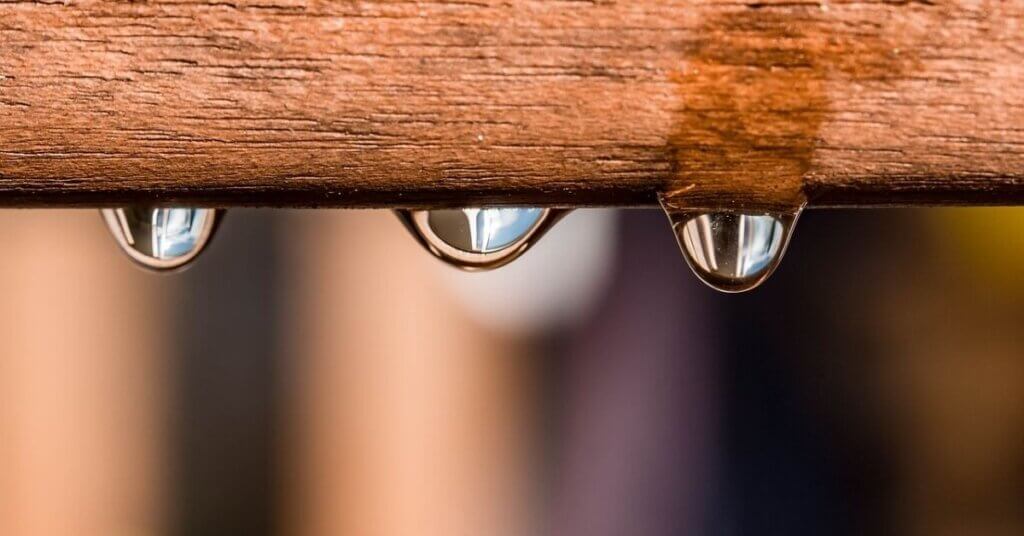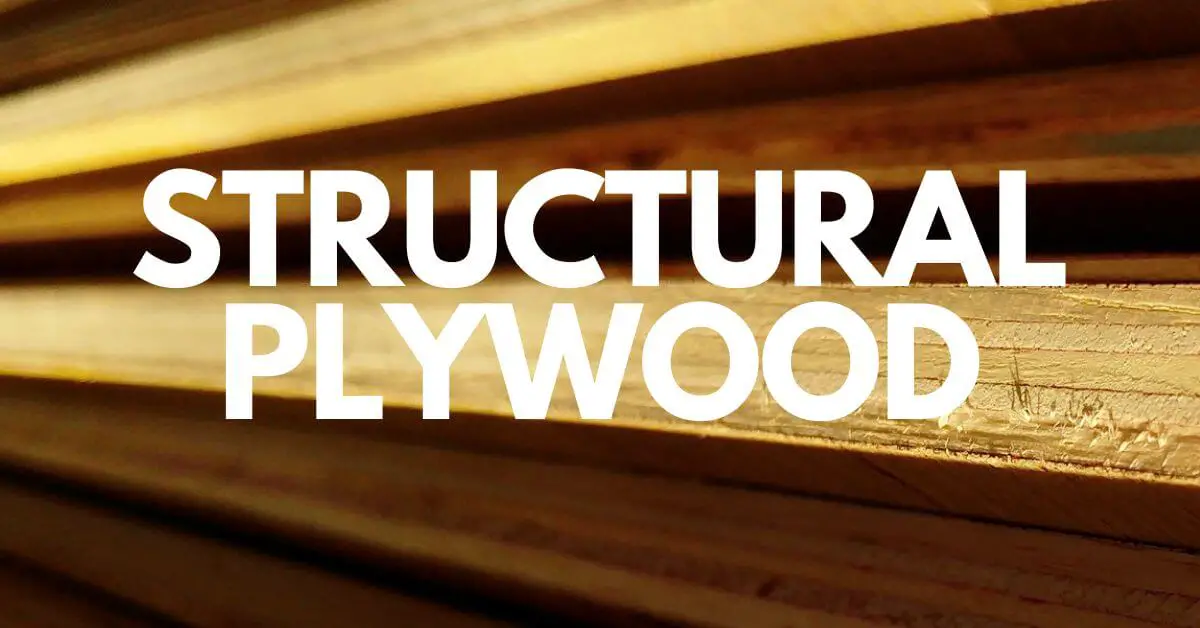What is Structural Plywood?
Structural plywood is a type of plywood designed to be high strength and stable. It is a perfect choice for long-term load carrying and structural performance.
Structural plywood, also known as sheathing plywood, is made of layers of thin sheets. The grain of each layer is glued in a direction perpendicular to each other. This structure increases the strength and stiffness of the plywood.
Another reason for the strength of structural plywood is the A-Bond and B-Bond phenolic adhesives used to bond the layers. Which is Durable for 25+ years in full exposure.
Common uses of Structural Plywood

Structural Plywood is commonly used in buildings and house constructions such as framing, beams, hoardings, flooring, wall sheathing, and roof sheathing.
A-Bond-type structural plywood is water and weather resistant and it is used for marine applications such as boats. They have an amazing ability to deal with moisture. It is excellent for areas where cross-panel strength properties are important.
B-Bond types Structural plywood is used for exterior doors, kitchens doors, and concrete formwork. Because structural plywood is lightweight and strong, it is also used to make crates, bins, and boxes. Being light, it is easy to transport.
Advantages and Disadvantages of Structural Plywood
Structural plywood is an excellent product, but it also has a few disadvantages with lots of advantages that should be known before using it.
Advantages
1. Strong and durable
Usually, Structural Plywood is stronger when compared to non-structural plywood and wood of the same thickness. It is stronger than wood against bending forces. But strength and durability also depend on which species of wood is used in the plywood.
2. Easy to work
Woodworkers prefer to work with plywood because it is lightweight and easy to work with all tools. It holds nails and screws well. Like solid wood, it is also paintable and sustainable.
3. Widely available
Structural Plywood is commonly used for construction worldwide. It is available in many different sizes, thicknesses, colors, and grades. You have lots of options to choose from according to your requirements.
4. Versatile
Structural Plywood is a versatile material that is suitable for various industrial applications such as boat making, flooring, concrete shuttering, and many more.
5. Attractive appearance
One advantage of using plywood is that it is attractive. The surface of high-quality plywood is uniform. After finishing, it gives excellent results.
Disadvantages
1. Expensive
Structural plywood is an expensive product. If compared with regular plywood and solid wood. ½ inch thick, 4×8 Marine-grade plywood costs around $50 to $70.
2. Not waterproof
Regular structural plywood is not waterproof. It is excellent water-resistant plywood. It performs better in moisture than other plywood. Whereas marine grade plywood is also not waterproof.
3. Requires Regular Maintenance
Structural Plywood requires regular maintenance. You can clean plywood with stain remover liquid or water.
4. Rough surface
The front and back faces of the structural plywood are not smooth. So the surface needs to be covered by another material such as laminate and paint.
Types of Structural plywood
Exterior grade structural plywood
Exterior grade plywood is mainly designed for outdoor use. It is moisture and temperature resistant and can easily withstand average humidity for a few years.
RTD plywood
RTD plywood is a popular choice for exterior applications. It is purely exterior-rated plywood. It is widely used for floor underlayment, roofing and ceilings, walling, and outdoor furniture.
This is an upgraded version of CDX Plywood which is manufactured with a quality control system using RTDs (Resistance Temperature Detectors).
RTD plywood manufacturers read and maintain the temperature during the bonding process of each layer of the plywood. Resistance temperature detectors increase durability and stability to last longer than regular plywood.
BWP plywood
When you are looking for weather-resistant plywood, then BWP plywood will be perfect for you. BWP plywood is made from weather and boil proof (WBP) glue.
Marine grade plywood, which is extremely weather resistant, is also made with BWP Glue. BWP is the best grade of plywood for marine and exterior applications.
Pressure-treated plywood
Pressure-Treated plywood is a type of plywood that is pressure-treated with chemicals to prevent insect damage and protect against rot.
This type of plywood is used for outdoor projects or projects that are exposed to moisture, such as decks, mailbox and light posts, landscape ties, bathroom doors, and more.
Chromated copper arsenate (CCA) is a water-based wood preservative that has been used for pressure-treated plywood. CCA contains chromium, copper, and arsenic.
How to Identify Structural Plywood?
To identify structural plywood, check the number AS/NZS 2269 on the back face of the plywood. This standard number contains information about plywood such as manufacture, grading, finishing, and branding of structural plywood.
These are some more points that you can check to identify structural plywood.
- The grading system of plywood represents the quality of the front and back surfaces of the plywood, such as AB-grade has grade A veneer on the front and B on the back.
- A-Bond and B-Bond adhesives are extremely durable and waterproof, used for making structural plywood. Its durability is about 20 to 25 years in full exposure environments.
- You do not get to see voids and gaps in structural plywood.
Common Questions
What is the difference between structural and non-structural plywood?
Type A-bond or B-bond glues are used for structural plywood, while C-Bond and D-Bond glues are used for non-structural plywood.
A-Bond glues are made from phenol formaldehyde resin and B-Bonds are combinations of melamine-urea formaldehyde.
The C and D bond glues are based on urea-formaldehyde resins, which deteriorate quickly under high humidity compared to phenol-formaldehyde.
C and D bond glue-based plywood is not suitable for outdoor use as it tends to deteriorate when exposed to the weather.
Non-structural plywood that has not been tested to AS/NZS 2269 While the structural is plywood tested.
Is structural plywood waterproof?

No, structural plywood is not waterproof. It is excellent water and weather-resistant. But if you are looking for something to withstand a great deal of moisture and water use, you should use marine-grade plywood.
Marine-grade plywood is designed for use in damp areas. It is made with high-quality hardwood veneers and waterproof glue.
What is structural CD plywood?
CD structural plywood is made by gluing several thin layers of 100% renewable softwood together with A Bond glue (exterior phenol-formaldehyde resin).
Its face and back sides are sanded. The front side is uniform, knots-free, and joint-free, while knots and joints may be present on the back side.

